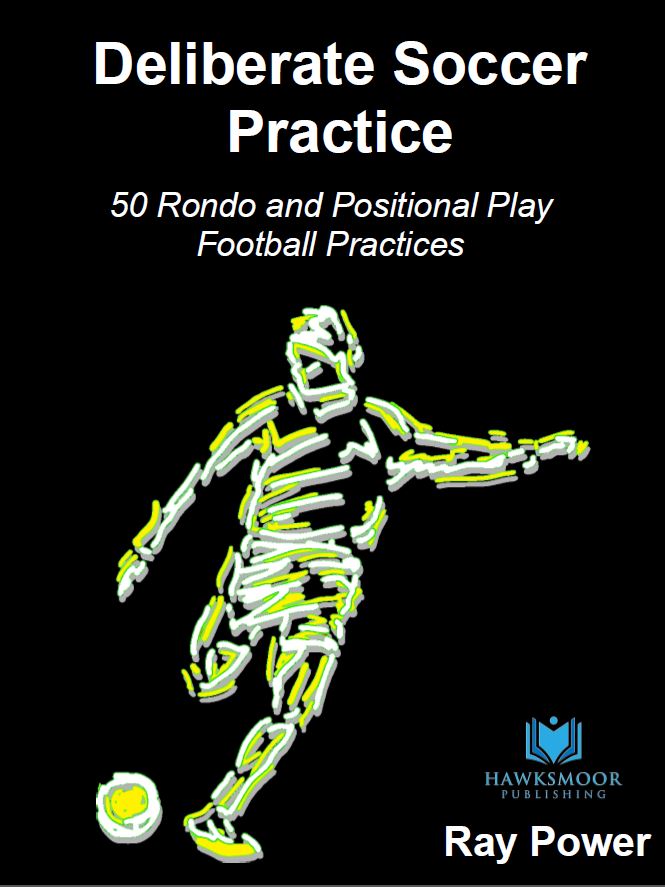Four Rondo practices from Ray Power’s Book:
*
PRACTICE 1: The Original 4 v 2
PURPOSE OF SESSION:
Although it is very difficult to attribute the invention of the rondo to any one coach, it is Laureano Ruiz, former Barcelona coach, whose name appears most often next to it. In the docu-movie, Take the Ball, Pass the Ball, Ruiz describes this 4v2 as the original rondo.
INITIAL SET-UP:
- Grid size as appropriate to players’ ages and abilities.
- Four possession players, one on each side of the grid, moving along their line.
- Two defenders who attempt to regain the ball.
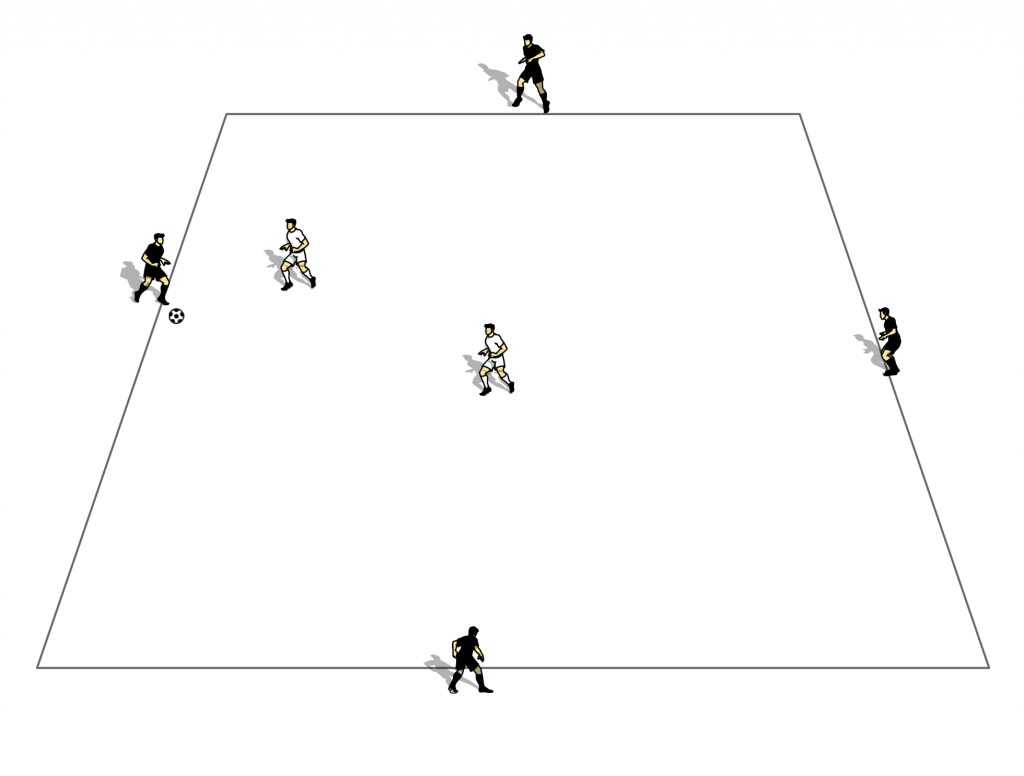
INSTRUCTIONS:
- Possession players keep the ball away from defenders for as long as possible, or for a target number of passes.
- Defenders swap after they intercept a pass, after a set period of time, or at the discretion of the coach.
PRACTICE 2: 4 v 1
PURPOSE OF SESSION:
This is a great place to start players if they are new to rondo-type activities, as there is only one defender.
INITIAL SET-UP:
- Grid size as appropriate to players’ ages and abilities.
- Four possession players, one on each side of the grid.
- One defender who tries to regain the ball.
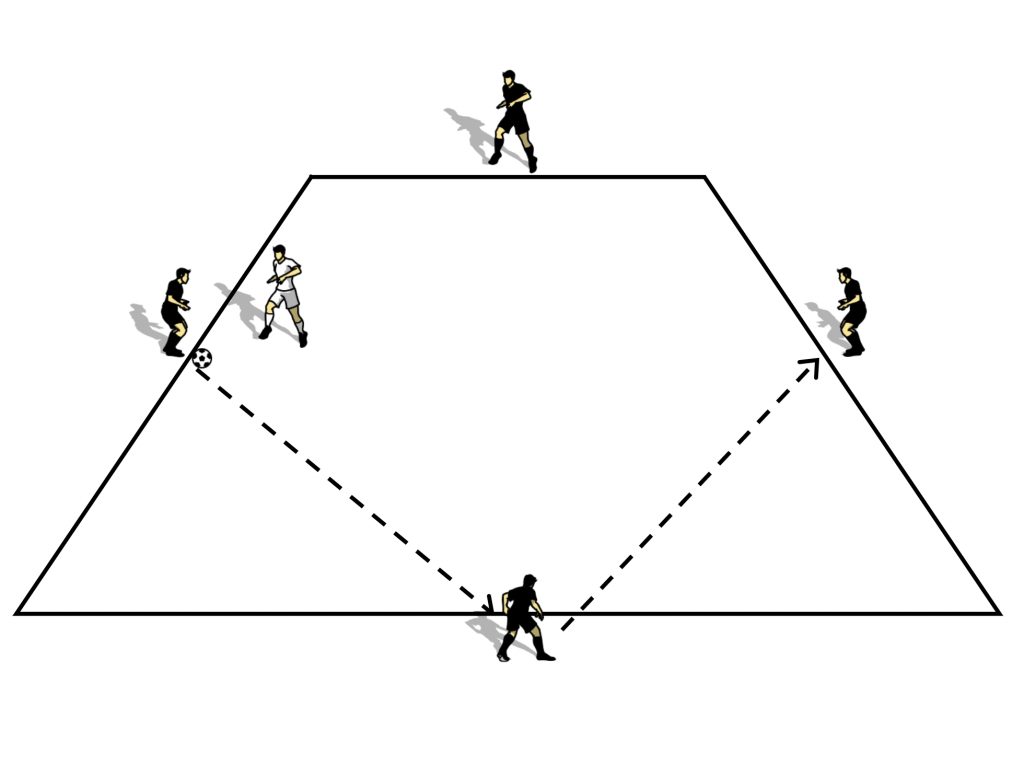
INSTRUCTIONS:
- Possession players keep the ball away from the defender for as long as possible, or for a target number of passes.
- Change the defender as required.
IN MY EXPERIENCE
This session (and the one that follows) shows introductory rondos that contain only one defender. Using only one defender is beneficial only when players are learning and may be unfamiliar with rondo practices.
Whilst using only one defender benefits the possession players in the short term, it does omit several key in-built rondo concepts. In the introduction, we spoke about first, second, and third-line passes, and it is third-line passes – that ‘break defensive lines’ – which are the most important passes available in the game and in the rondo. Having that option available is key moving forward – can players recognise and execute the opportunity to break lines and pass between two defenders?
Ensure, therefore, that whilst you may introduce players to rondos with only one defender, (maybe to help with confidence, also), moving them swiftly on to situations where there are a minimum of two will contribute greatly towards their long-term player development.
PRACTICE 3: 3 v 1
PURPOSE OF SESSION:
This may seem like a regression from the 4v1 with which we started, but it actually adds a vital game element to our sessions – movement and passing lanes.
INITIAL SET-UP:
- Grid size as appropriate to players’ ages and abilities.
- Three possession players, one occupying three of the four sides of the grid.
- Possession players can, and are encouraged to, move along their line.
- One defender who tries to regain the ball.
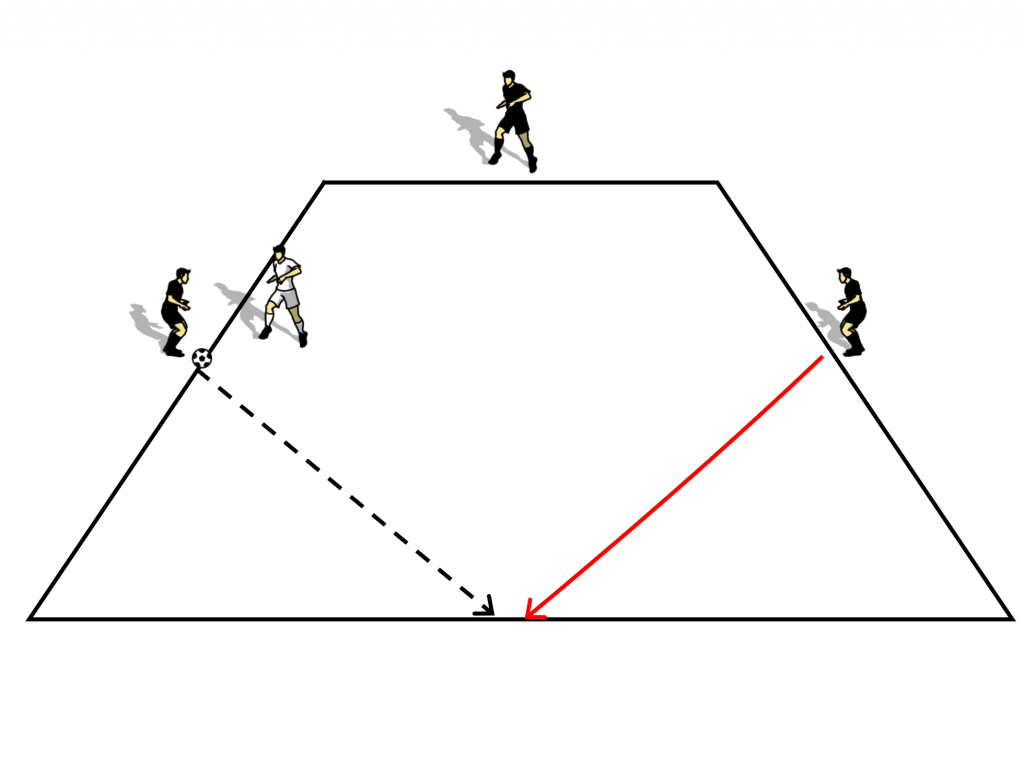
INSTRUCTIONS:
- Possession players keep the ball away from the defender for as long as possible, or for a target number of passes.
- The focus is on the possession players who do not have the ball. It is their responsibility to move to open up a passing lane for the player with the ball.
PRACTICE 4: 4 v 2 With Positions
PURPOSE OF SESSION:
Session 1 describes the orignal 4v2 rondo. Here, we see the set-up being exactly the same visually, but notice that there are ways to add position-specific elements to it. Later sessions in this book will explore more ways to add position-specific elements to rondo-based practices.
INITIAL SET-UP:
- Grid size as appropriate to players’ ages and abilities.
- Four possession players, one of each side of the grid – playing according to their matchday positions.
- Two defenders who attempt to regain the ball.
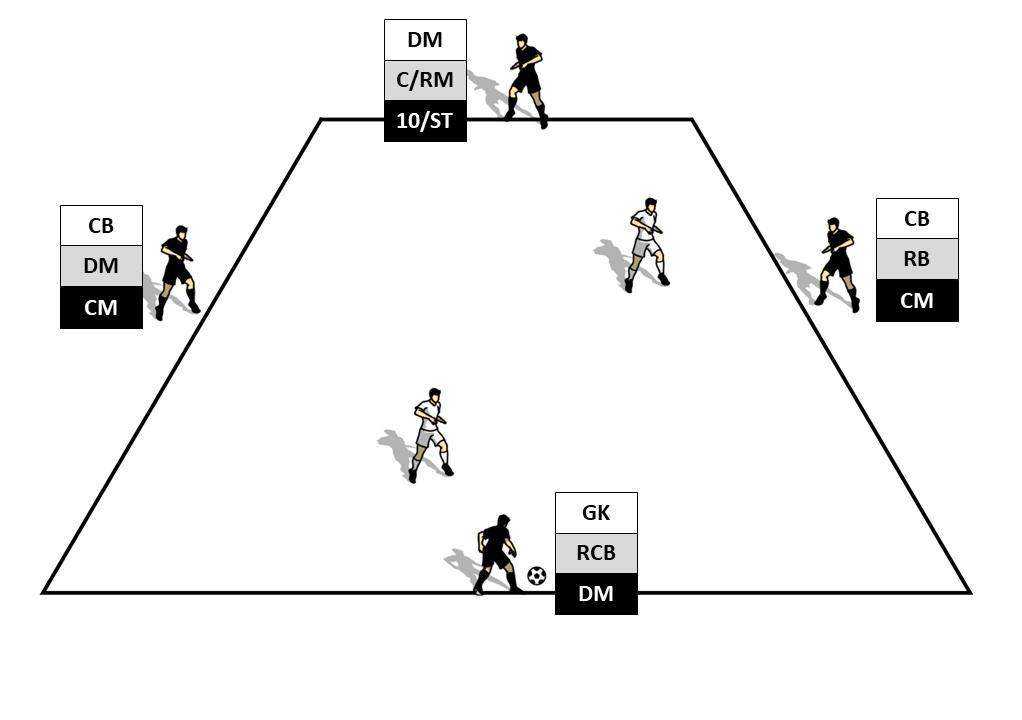
INSTRUCTIONS:
- Possession players keep the ball away from the defenders for as long as possible, or for a target number of passes.
- By playing in the shape of their position, players can develop positional communication and habits.
*
Four Rondo practices from Ray Power’s Book:


